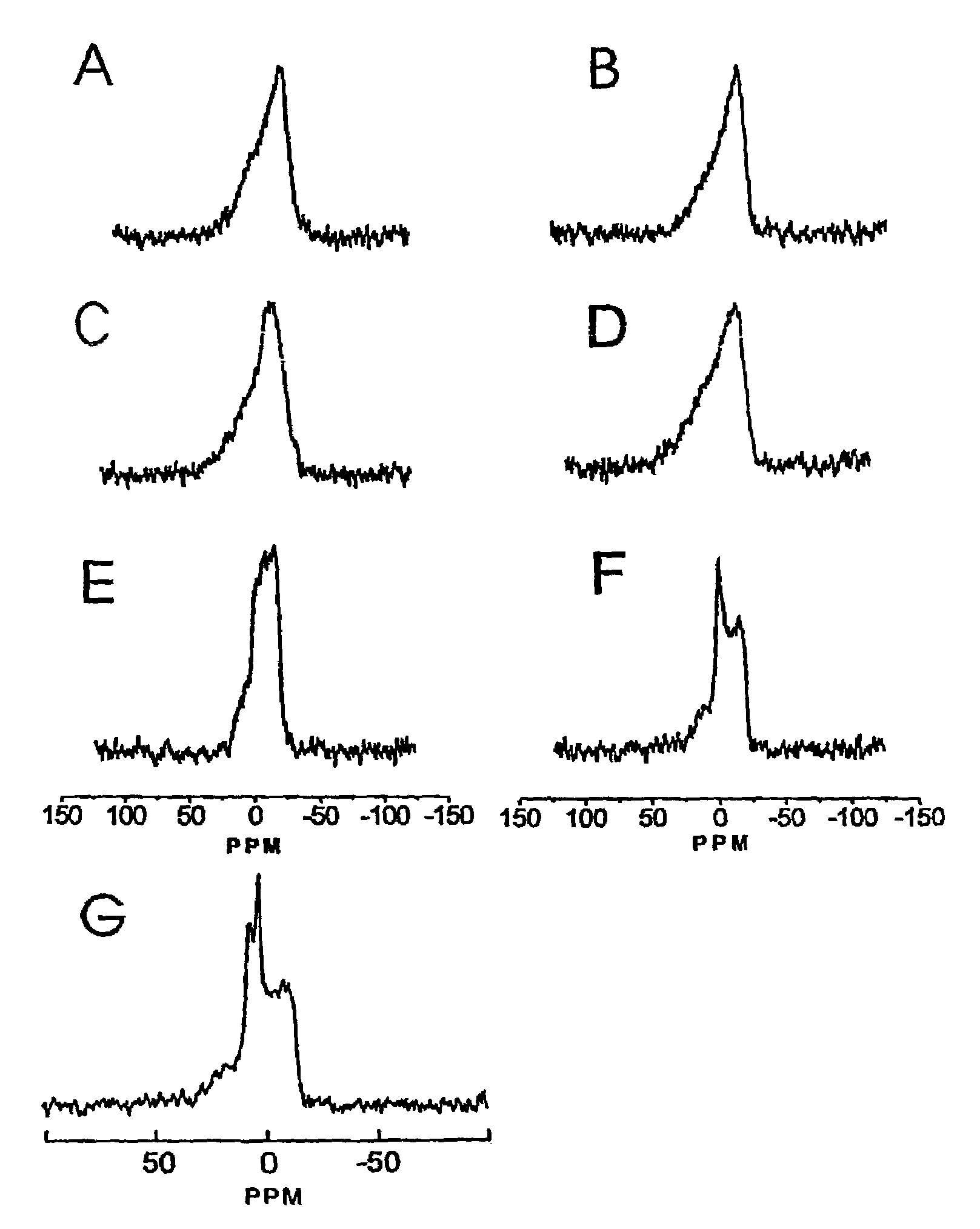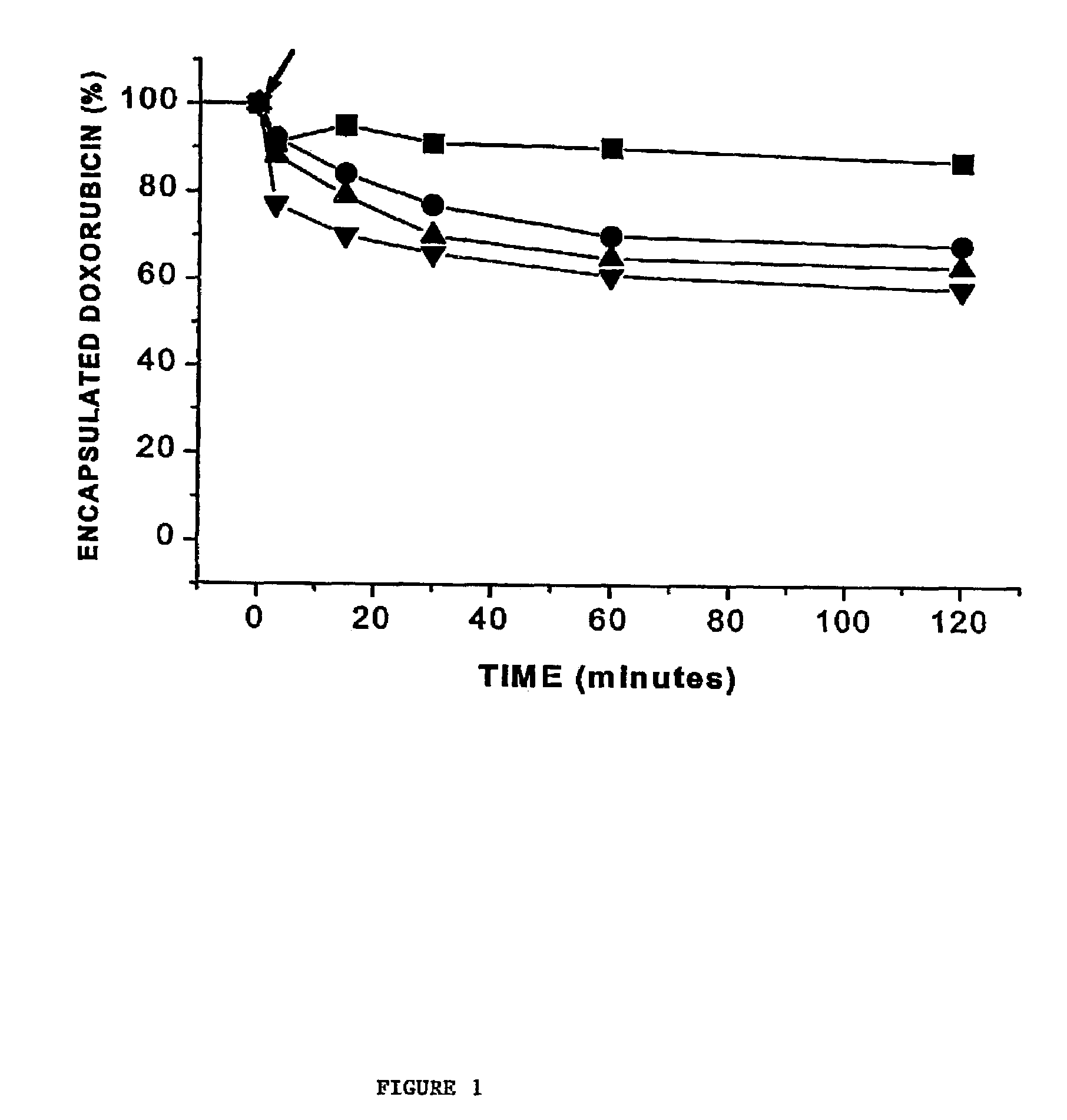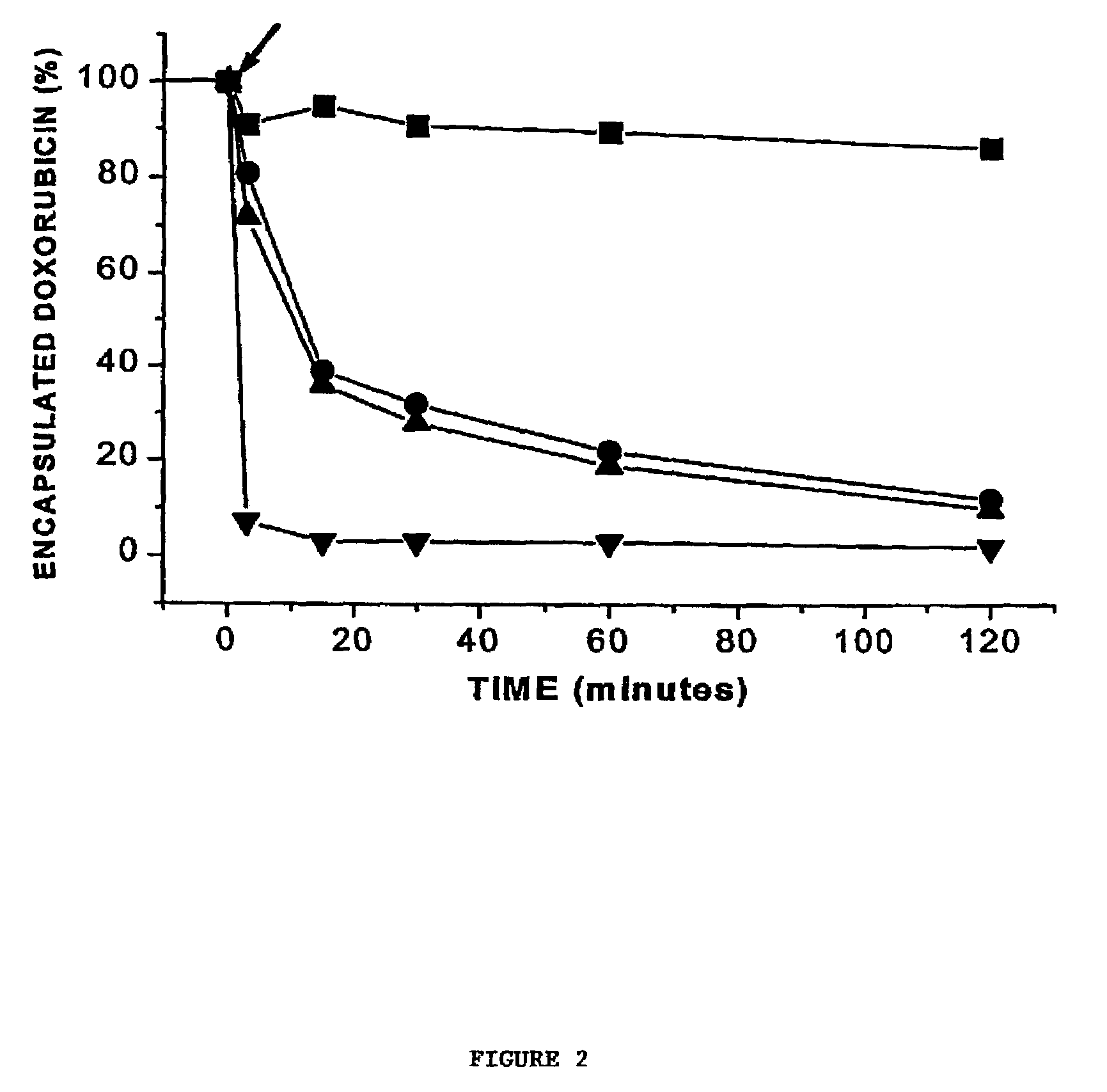Triggered release of liposomal drugs following mixing of cationic and anionic liposomes
a technology of anionic liposomes and cationic liposomes, which is applied in the direction of liposomal delivery, medical preparations, pharmaceutical delivery mechanisms, etc., can solve the problems of drug release drop, no real effective way to modulate or alter drug release, and the most problematic withdrawal of this second step, etc., to achieve more targeted and time-controlled effects
- Summary
- Abstract
- Description
- Claims
- Application Information
AI Technical Summary
Benefits of technology
Problems solved by technology
Method used
Image
Examples
example
[0068]This example illustrates the influence of dioleoylphosphatidylethanolamine (DOPE) and cholesterol, two lipids that have been shown to favour or facilitate formation of non-bilayer structures such as the inverted hexagonal (HII) phase. Employing anionic doxorubicin-containing LUV, it has been found that rapid release of encapsulated doxorubicin can be achieved on addition of cationic LUV and that this rapid release correlates with formation of nonbilayer lipid structures demonstrated by 31P NMR and freeze-fracture techniques. Further, the presence of both DOPE and cholesterol is surprisingly essential for rapid release to be observed. These results are discussed below in terms of the potential utility of these systems for triggered release applications.
[0069]N,N-dimethyl-N,N-di-9-cis-octadecenylammonium chloride (DODAC) was provided by Dr. J. Gaucheron, University of British Columbia (Vancouver, BC, Canada). 1,2-Dioleoyl-sn-glycero-3-phosphoglycerol (DOPG), 1,2-distearoyl-sn-gl...
PUM
 Login to View More
Login to View More Abstract
Description
Claims
Application Information
 Login to View More
Login to View More - R&D
- Intellectual Property
- Life Sciences
- Materials
- Tech Scout
- Unparalleled Data Quality
- Higher Quality Content
- 60% Fewer Hallucinations
Browse by: Latest US Patents, China's latest patents, Technical Efficacy Thesaurus, Application Domain, Technology Topic, Popular Technical Reports.
© 2025 PatSnap. All rights reserved.Legal|Privacy policy|Modern Slavery Act Transparency Statement|Sitemap|About US| Contact US: help@patsnap.com



